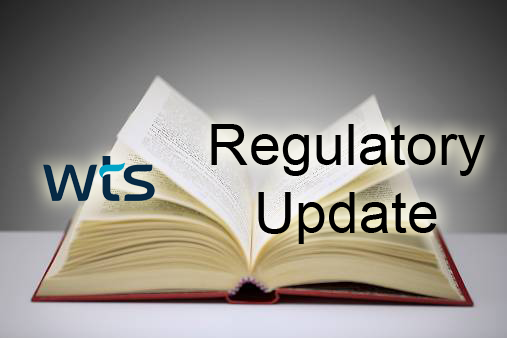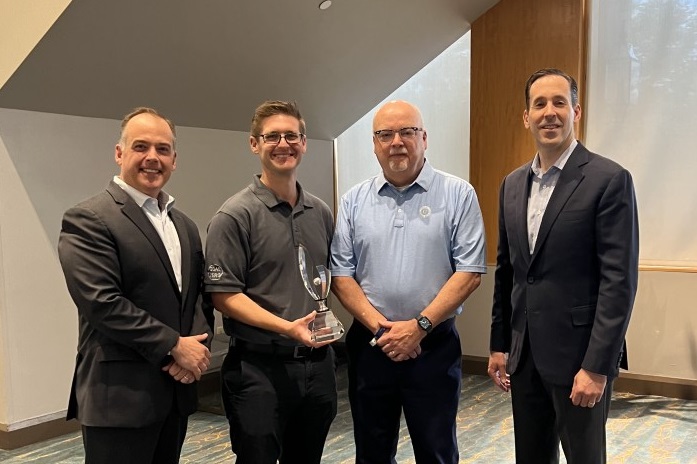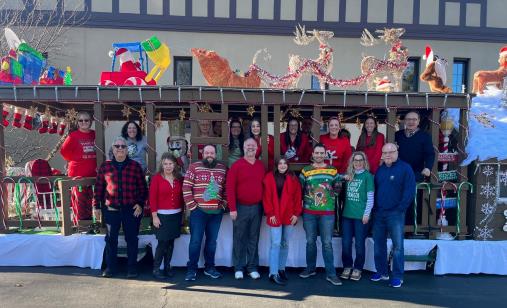Subscribe to our e-Manifest & Regulatory Newsletters
-
Nov 15 2024We are thrilled and proud to be able to present to you our 2023 Sustainability Report. This report summarizes the many activities that WTS successfully completed to maintain our commitment of contributing to the betterment of
-
Jul 10 2024PFAS: As we all know, the regulatory framework for proper management of PFAS material continues to evolve. WTS has been and continues to closely monitor this situation and in particular the impact it is having on
-
Apr 22 2024In honor of Earth Day, WTS Employees braved the elements both in Western NY and Texas this past Saturday by participating in local volunteer cleanup activities. In Texas, WTS partnered with FUJIFILM associates and the
-
Dec 19 2023USEPA recently made notification of a future regulatory change in the management of “RCRA empty” containers by filing A Notice of Proposed Rulemaking. A virtual Public Meeting was held on November 1 and comments from affected
-
Jun 23 2023It has been some time since we have sent out any information about the Hazardous Waste e-Manifest program. This is due to the fact that both utilization and adoption of the program continue to lag throughout
-
Jun 23 2023WTS has long advocated individual state adoption of USEPA’s 2018 Definition of Solid Waste Rule. We believe that this rule promotes responsible recycling and contributes to the Circular Economy by allowing for generators and others to
-
Jun 23 2023No Cruise Control On behalf of all of WTS, we would like to extend our wishes to you for a safe and productive summer. WTS is completing and celebrating our 40th year in business. Yet, even with
-
Jun 23 2023Whether you’re working or playing outside in the summer, anybody not accustomed to the heat is at risk for a heat-related illness. Take steps to protect yourself: Wear appropriate clothing, including a wide-brimmed hat. Take
-
Jun 20 2023WTS was honored once again at the American Chemistry Council Annual Responsible Care® Conference held this past April as the Responsible Care® Partner of the Year. As noted by the ACC this award “Recognizes the superb
-
Mar 14 2023As a partner in good standing of the American Chemistry Council’s Responsible Care® program, we are pleased and proud to present highlights from our Annual Responsible Care Management System® Report for 2022. Our Responsible Care
-
Dec 16 2022We greet you with hope and peace this Holiday Season! In keeping with the meaning of the season, WTS, Inc. is making a contribution to Cystic Fibrosis Foundation, Ralph C. Wilson Community Center, EduNations in
-
Nov 18 2022WTS – ForTY Years This month marks our 40th year, prompting gratitude amongst our entire WTS team. The rigor of our industry and the challenges we encounter and overcome together often leave us little
-
Nov 15 2024We are thrilled and proud to be able to present to you our 2023 Sustainability Report. This report summarizes the many activities that WTS successfully completed to maintain our commitment of contributing to the betterment of
-
Jul 10 2024PFAS: As we all know, the regulatory framework for proper management of PFAS material continues to evolve. WTS has been and continues to closely monitor this situation and in particular the impact it is having on
-
Apr 22 2024In honor of Earth Day, WTS Employees braved the elements both in Western NY and Texas this past Saturday by participating in local volunteer cleanup activities. In Texas, WTS partnered with FUJIFILM associates and the
-
Dec 19 2023USEPA recently made notification of a future regulatory change in the management of “RCRA empty” containers by filing A Notice of Proposed Rulemaking. A virtual Public Meeting was held on November 1 and comments from affected
-
Jun 23 2023It has been some time since we have sent out any information about the Hazardous Waste e-Manifest program. This is due to the fact that both utilization and adoption of the program continue to lag throughout
-
Jun 23 2023WTS has long advocated individual state adoption of USEPA’s 2018 Definition of Solid Waste Rule. We believe that this rule promotes responsible recycling and contributes to the Circular Economy by allowing for generators and others to
-
Jun 23 2023No Cruise Control On behalf of all of WTS, we would like to extend our wishes to you for a safe and productive summer. WTS is completing and celebrating our 40th year in business. Yet, even with
-
Jun 23 2023Whether you’re working or playing outside in the summer, anybody not accustomed to the heat is at risk for a heat-related illness. Take steps to protect yourself: Wear appropriate clothing, including a wide-brimmed hat. Take
-
Jun 20 2023WTS was honored once again at the American Chemistry Council Annual Responsible Care® Conference held this past April as the Responsible Care® Partner of the Year. As noted by the ACC this award “Recognizes the superb
-
Mar 14 2023As a partner in good standing of the American Chemistry Council’s Responsible Care® program, we are pleased and proud to present highlights from our Annual Responsible Care Management System® Report for 2022. Our Responsible Care
-
Dec 16 2022We greet you with hope and peace this Holiday Season! In keeping with the meaning of the season, WTS, Inc. is making a contribution to Cystic Fibrosis Foundation, Ralph C. Wilson Community Center, EduNations in
-
Nov 18 2022WTS – ForTY Years This month marks our 40th year, prompting gratitude amongst our entire WTS team. The rigor of our industry and the challenges we encounter and overcome together often leave us little






